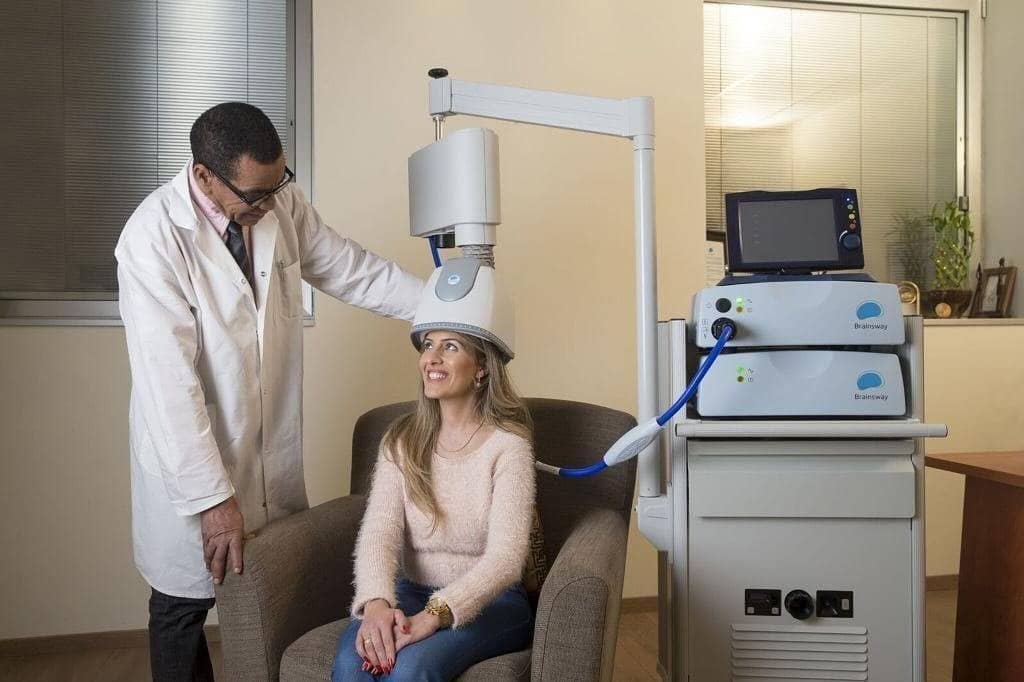[vc_row][vc_column][vc_column_text]
If you’re not familiar with TMS treatments, the first thing to know is that there are two types: TMS (transcranial magnetic stimulation) and Deep TMS.
Both treatments stimulate certain areas of the brain using magnetic pulses via a helmet worn by the patient. This method developed as some researchers found that mental illness like depression and obsessive compulsive disorder can stem from over or underactive neurons in our brain. The TMS treatment then works to manipulate those neuron’s activity. (We’ll describe that more below…)
This treatment can be especially effective for people who have been resistant to other types of treatment like medication!
Today we’ll be focusing on Deep TMS treatments. While similar to TMS, Deep TMS uses a different coil that works to more deeply stimulate the activity in your brain.
What does Deep TMS help with?
According to Advanced Medical Health, Deep TMS is the “the safest treatment with the least side effects for patients with treatment resistant depression.” It helps treat depression by sending an electromagnetic pulse to rebalance abnormalities in your limbic system. Your limbic system is the part of your brain that deals with emotional and behavioral responses. When there are imbalances or abnormalities within the limbic system, it becomes the physical source of depression in our brains.
It’s much the same for treating OCD. When you have OCD, specific regions of your brain are in what’s known as hyperconnectivity–which really just means they are overactive. This hyperconnectivity can lead to those intrusive thoughts or compulsions that make up many people’s experience with OCD. Deep TMS works to balance this hyper-activity in much the same way it works to balance out the abnormalities that cause depression.
So what is the treatment like?
At the start of the Deep TMS treatment, you’ll put on a helmet that holds the electromagnetic coil that will stimulate your brain via those pulses we mentioned earlier.
The magnetic pulses sent to your brain by the helmet focus on the region of the brain responsible for emotional regulation–the limbic system. This lasts about twenty minutes per session, and is completely painless. While receiving the treatment you’ll be seated so that you can stay as comfortable as possible for the duration. It can vary from person to person how frequently the treatment should be repeated, but most people find they see the best results when they return for four to six weeks, at one session a day.
The good news is that unlike other treatments such as ketamine treatment, which is a drug-based treatment–you can drive home yourself after!The procedure is completely non-invasive, which makes it very convenient.
There are a lot of benefits to Deep TMS besides the convenience of the procedure. It’s a great alternative for folks who are treatment resistant, and has no risky side effects. And because it is an FDA approved treatment, using it to treat otherwise treatment-resistant depression is covered by most major insurance plans. The quick nature of the treatment–anywhere from four to six weeks–also makes it a more cost effective treatment than longer term treatments or therapies.
If you are interested in learning more about what the Deep TMS treatment is like or trying it, our clinicians can help support you in that process. Get in touch today and we can discuss whether Deep TMS is right for you.
[/vc_column_text][/vc_column][/vc_row][vc_row][vc_column][/vc_column][/vc_row]

